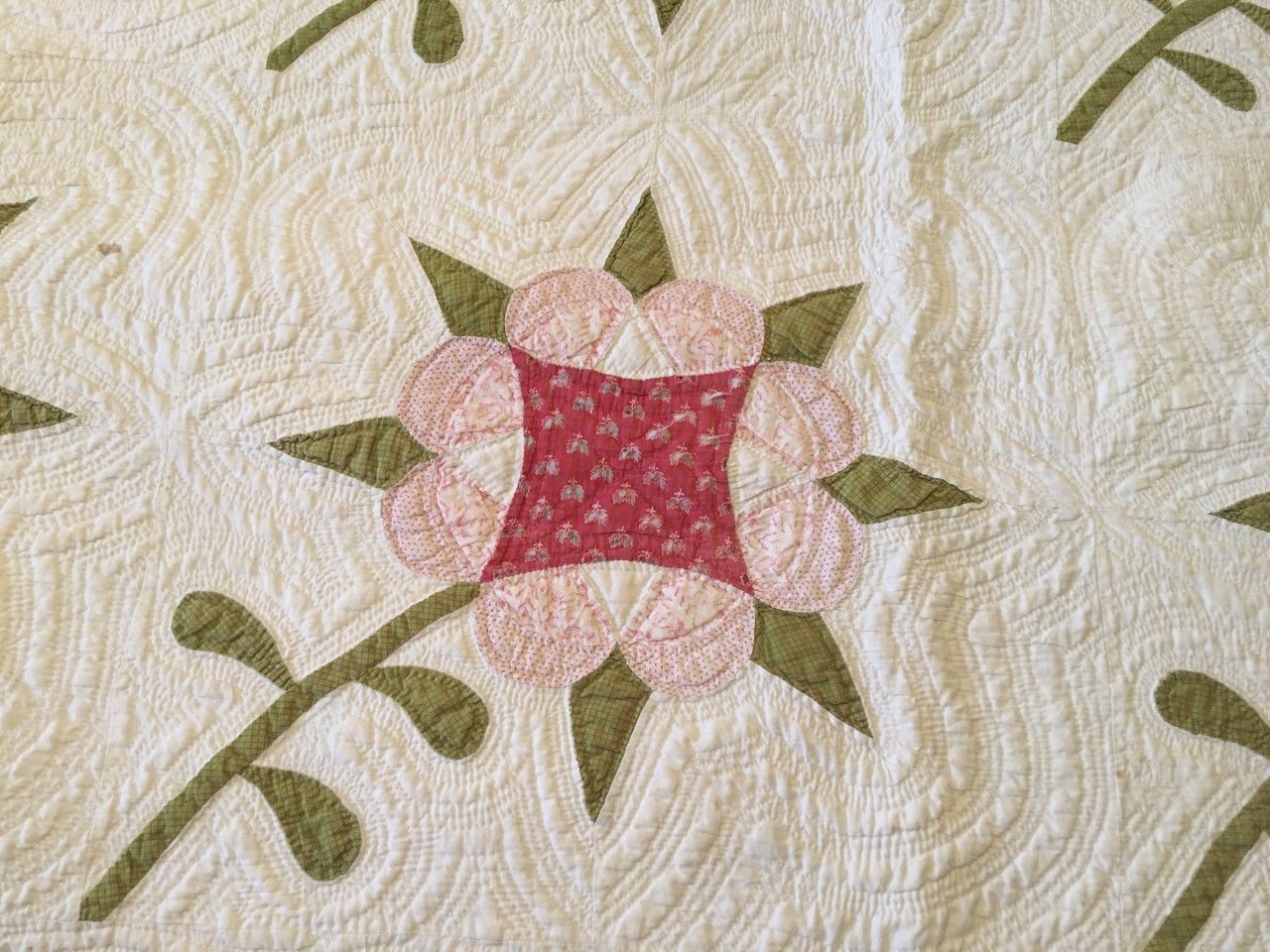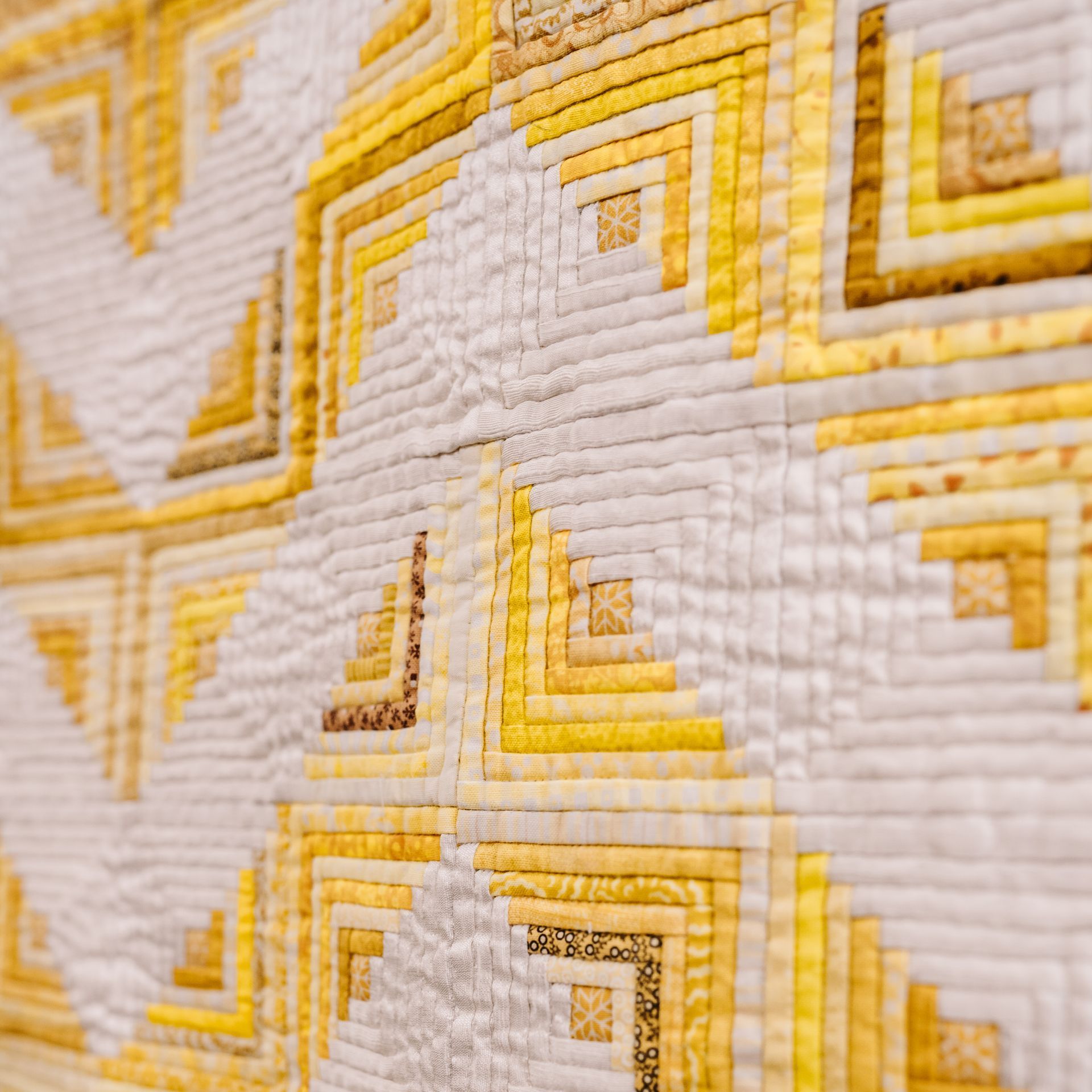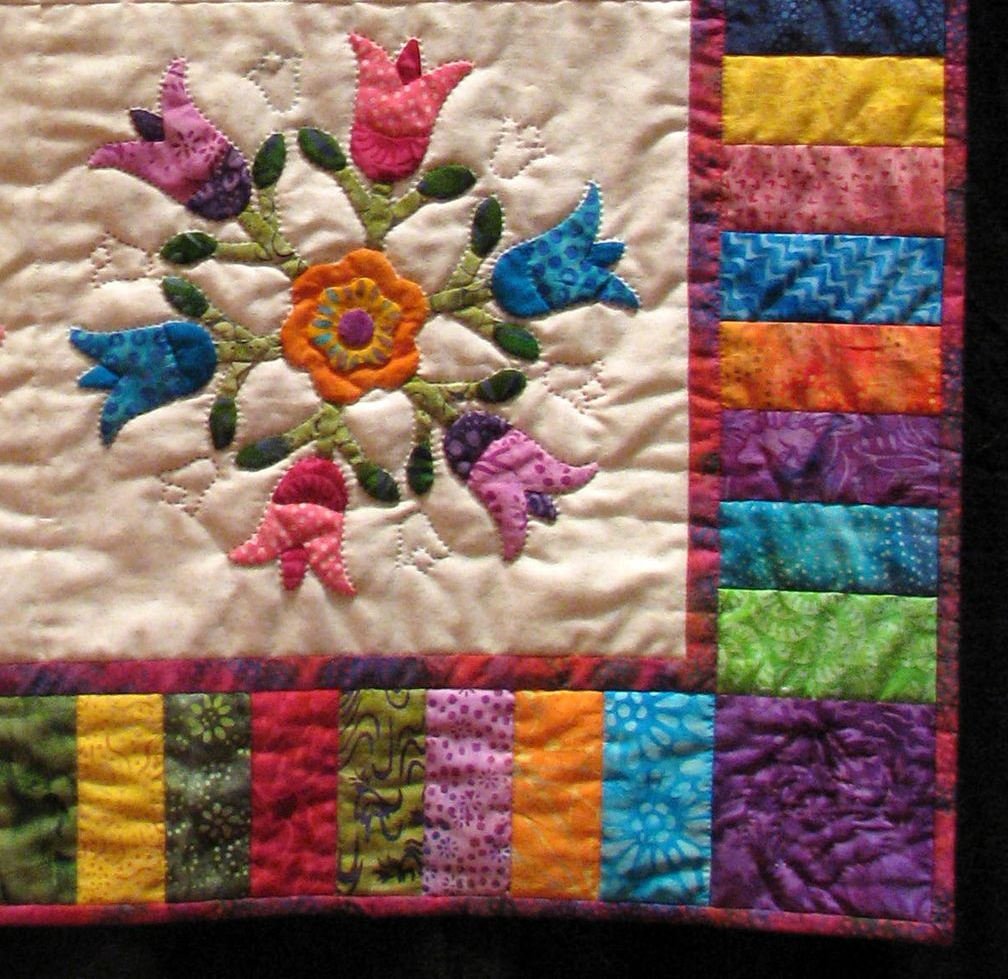Quilt History Snippets for November 2025
What: Review of Uncoverings 1995, Volume 16 of the Research Papers of the American Quilt Study Group, edited by Virginia Gunn
Topic: “Ruth Finley and the Colonial Revival Era”
Author: Ricky Clark
Clark’s abstract for this paper notes that Ruth Finley was born in Akron, Ohio, in 1884 and raised in Ohio’s Western Reserve. This region was originally a part of Connecticut’s 1662 charter that granted it land stretching west to the Pacific Ocean. After the Revolutionary War such land grant claims by Connecticut and other states were ceded to the U.S. federal government but Connecticut reserved a 120-mile strip of land in Ohio along Lake Erie as compensation. It was settled by New Englanders beginning in 1796 and the Reserve was incorporated into the state of Ohio upon statehood in 1803. [from Google search “Ohio’s western reserve” 10-25-25]
It is Clark’s thought that having been raised in the Western Reserve by a large family of New Englanders, many of whom remained in New England, but exchanged visits frequently over the years, gave Ruth Finley a unique perspective on the Colonial Revival movement. Clark believes Finley’s early experiences and background and family influences “shaped the pattern and depth of scholarship that resulted in her classic book, Old Patchwork Quilts and the Women Who Made Them, first published in 1929…” [p. 33]
Finley’s college career was short, only three semesters. In 1910 Finley became an investigative reporter for the Cleveland Press and made a name for herself investigating working conditions for Cleveland’s working class women. Into adulthood Finley followed the inclinations of her parents who had involved her in their own activities in national politics at an early age. She remained actively involved in Republican politics all her life, even editing the Women’s National Republican Club magazine, “the first national political review directed to women.” [p. 36]
Finley also married Emmet Finley in 1910. He was also a reporter at the Press. Interestingly, both Ruth and Emmet participated in some paranormal work with Ruth being the receiver of messages from the beyond and Emmet being her transcriber/note taker. This is something they kept to themselves until she revealed it in her autobiography begun in 1951. [p. 37]
Ricky Clark describes in great detail the professional and personal lives of Ruth and Emmet. She goes into particular detail about Ruth’s research and information-collecting practices as she began to delve into the Colonial Revival movement and quiltmaking. She had a strong preference for early quilt block patterns. She and a couple of family members and friends would take day trips “through the countryside looking at quilts airing on clotheslines, and buying some.” She also interviewed the women from whom she bought, probing for more information about quilt block names and stories about quiltmaking from earlier days. [p. 39]
Clark details the development of the Colonial Revival movement noting that “The term ‘colonial,’ never historically accurate, could be seen as a code word for anti- or non-Victorian, anti- or non-modern…also profoundly anti-urban.” [p. 41] There is discussion of Finley’s interest in architectural styles of the region. And there are extensive descriptions of Finley’s deep interest in collecting “personal stories of the history and traditions associated with quilts, especially “sentimental stories.” [p. 45-48]
Clark describes the family’s collection of letters, diaries, and artifacts from their earliest days in New England. These are the primary sources Finley was able to plumb for her scholarly research on Ruth Finley and there was much for her to plumb! The family was deeply interested in the lives of their ancestors, and they kept a lot of primary documents and artifacts. [p. 48-50] There is even reference to the fact that Ruth Finley owned Elizabeth Keckley’s Lincoln Quilt. It is a revealing story from which we get the cringe-worthy tale that well after Finley died, her grand-niece and -nephew took that quilt to their classroom show-and-tell. [p. 50]
There is so much more interesting information in this well-researched and -written article. Clark’s scholarship is commendable. I recommend it to you all. And don’t fail to check out the Endnotes section. There are no less than 82 citations!
Best wishes as we begin the holiday season. Talk to you again in December.
Share Post




